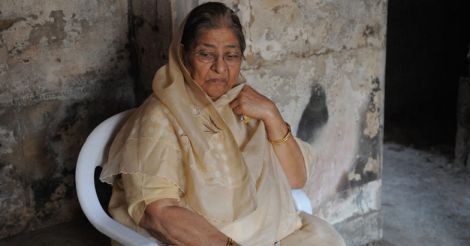Gulbarg Society stands witness to the slaughter of 69 people who pleaded for mercy for almost 12 hours.
The residential complex on the suburbs of Ahmedabad comprised apartments and individual houses where about 500 people lived. Most of the residents were Muslims, including former Congress MP Ehsan Jafri. He was a popular poet who found his way to the Congress through trade unions and the communist party.
Hell broke loose on February 28, 2002 when thousands of thugs descended the residential complex. Organised attacks and massacres had already started in many parts of Gujarat a day after 59 karsevaks were burned alive in the Sabarmati Express at Godhra.
As soon as gangs of assailants rounded up the Gulbarg Society, Jafri sensed danger. He called up top officers in New Delhi and Ahmedabad. Ahmedabad Police Commissioner P C Pandey came to the complex and assured Jafri of protection. He said that he would soon deploy more policemen in the area.
In fact, the few policemen on duty in the area retreated. It was a matter of time before the mob razed the compound wall and the gate. Jafri tried to negotiate with them but he was dragged into the crowd and brutally killed. A massacre ensued. Even women and children were not spared. The complex was set on fire. Not a single policeman came to the riot site where the killers were at work for a whole day.
Later, 69 bodies were recovered. As many as 31 people vanished without a trace.
The police investigation proceeded at a snail’s pace despite the brutalities suffered by the residents. Human rights activist Teesta Setalvad went to the Supreme Court, alleging that the police investigation could not ensure justice to the victims. The Supreme Court formed a special investigation team led by R K Raghavan in March 2008 to investigate nine cases including the Gulbarg Society massacre.
That investigation has led to the conviction of 24 accused on Thursday. Kailash Dhobi, Yogendrasinh Shekhawat, Krushna Kumar Kalaal, Dilip Kalu, Jayesh Parmar, Raju Tiwari, Naran Tank, Lakhansinh Chudasama, Dinesh Sharma, Bharat Balodiya and Bharat Rajput were convicted for murder. Only nine of the 66 accused are now in jail. The rest have either been released on bail or jumped bail.
The judgement that rules out any conspiracy behind the attack is a setback in the fight for justice. The concern was voiced by Jafri’s son Tanvir: “How could just 24 men attack about 400 residents and kill so many?”
Jafri’s wife Zakia had approached the court alleging a top-level conspiracy behind the massacre. She has said that the then Chief Minister Narendra Modi and 61 other high officials had knowledge of the attack. The SIT questioned Modi in March 2010. The team, however, exonerated Modi in its report submitted in February 2012. A special court accepted the findings.
In March 2014, Zakia Jafri appealed the High Court against closing the case. The trial has been completed in the case. An order is awaited.
The Gujarat riots had seen an even bigger massacre in Naroda Patiya. As many as 126 people were killed in the suburb of Ahmedabad. As many as 32 people including former minister Maya Kodnani were sentenced in the case in August 2012.

























 Zakia Jafri, wife of former Congress MP Ehsan Jafri. File photo
Zakia Jafri, wife of former Congress MP Ehsan Jafri. File photo